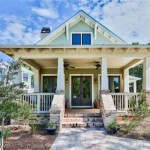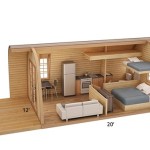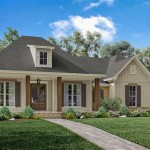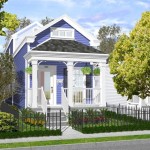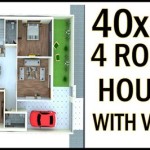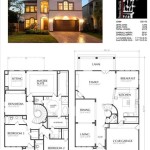Homemade Dog House Plans: A Comprehensive Guide
Providing a safe and comfortable shelter for a canine companion is a fundamental aspect of responsible pet ownership. While commercially available dog houses offer convenience, constructing a homemade dog house provides a personalized and often more economical solution. This article explores various homemade dog house plans, focusing on design considerations, material selection, and construction techniques to assist individuals in building a durable and functional shelter for their dogs.
The decision to build a dog house often stems from a desire to tailor the shelter to the specific needs of the dog and the surrounding environment. Factors such as the dog's size, breed, climate, and available space influence the design and construction process. Furthermore, building a dog house allows for customization, incorporating features that enhance comfort and protection. Choosing the right plan is therefore the cornerstone of a successful dog house project.
Choosing the Right Dog House Plan
Selecting an appropriate dog house plan involves several key considerations. The size of the dog is paramount. The interior dimensions of the house should allow the dog to stand, turn around comfortably, and lie down without feeling cramped. Measuring the dog's height, length (from nose to base of tail), and width will provide the necessary dimensions for calculating the appropriate floor area and height of the house. A dog house that is too large, however, can be detrimental in colder climates, as the dog's body heat will dissipate more quickly, making it harder to maintain a comfortable temperature.
Climate plays a significant role in determining the design and insulation requirements. In regions with harsh winters, insulated walls, a raised floor, and a small, strategically placed doorway are essential for minimizing heat loss. The doorway should be positioned away from prevailing winds to prevent drafts. In warmer climates, ventilation is crucial for preventing overheating. Plans incorporating vents, light-colored roofing materials, and shaded areas can help regulate the internal temperature. A removable roof can also facilitate cleaning and improve airflow during warmer months.
The dog's breed also influences the choice of plan. Short-haired breeds, such as Greyhounds or Boxers, are more susceptible to cold and will benefit from a well-insulated and draft-free dog house. Long-haired breeds, such as Huskies or Alaskan Malamutes, may require less insulation but still need protection from extreme temperatures and wind. Some breeds are prone to joint problems and may require a ramp for easy access to the dog house, especially if the floor is raised.
Material Selection for Durability and Safety
The materials used in constructing a dog house significantly impact its durability, weather resistance, and safety. Pressure-treated lumber is a common choice for framing due to its resistance to rot and insect infestation. However, it is crucial to ensure that the lumber is properly dried and sealed to prevent the leaching of chemicals that could be harmful to the dog. Untreated lumber, such as cedar, redwood, or pine, is another option, offering natural resistance to decay and insects. Cedar and redwood are particularly prized for their natural oils, which provide additional protection against the elements.
Plywood is often used for the walls and roof due to its strength and ease of use. Exterior-grade plywood is recommended for its water resistance. However, it is essential to seal the edges of the plywood with a waterproof sealant to prevent moisture from penetrating the layers and causing delamination. OSB (Oriented Strand Board) is a less expensive alternative to plywood, but it is less water-resistant and should be used with caution in areas prone to moisture.
Roofing materials should be chosen for their durability and ability to withstand the elements. Asphalt shingles are a common and affordable option, providing good weather protection. Metal roofing is another durable choice, offering excellent resistance to rain, snow, and wind. However, metal roofing can become hot in direct sunlight, so it is important to ensure adequate ventilation and insulation to prevent overheating. Cedar shingles or shakes can provide a more natural and aesthetically pleasing look, but they require more maintenance to prevent rot and decay.
Insulation is crucial for maintaining a comfortable temperature inside the dog house. Fiberglass insulation is a common and effective option, but it can be irritating to the skin and lungs. It is essential to enclose the insulation within the walls and roof to prevent the dog from coming into contact with it. Rigid foam insulation, such as polystyrene or polyurethane, is another option, offering good insulation value and ease of installation. It is also resistant to moisture and mildew. Natural insulation materials, such as sheep's wool or recycled denim, are environmentally friendly alternatives that offer good insulation and are less irritating to the skin.
Fasteners, such as nails and screws, should be chosen for their strength and corrosion resistance. Galvanized or stainless-steel fasteners are recommended for exterior applications to prevent rusting. It is important to use the correct type and size of fasteners to ensure that the dog house is structurally sound and can withstand the forces of wind and weather. All sharp edges and protruding fasteners should be eliminated to avoid injury to the dog.
Construction Techniques for a Durable and Safe Dog House
Constructing a dog house requires careful planning and attention to detail. Begin by creating a detailed blueprint based on the chosen plan. This blueprint should include all dimensions, materials, and assembly instructions. Accurate measurements and precise cuts are essential for ensuring that the dog house is structurally sound and weatherproof. Use a level and square to ensure that the frame is straight and that the walls are plumb.
The foundation of the dog house is crucial for its stability and longevity. A raised floor is recommended, especially in wet climates, to prevent moisture from seeping into the house. The floor can be constructed from pressure-treated lumber or plywood, supported by a sturdy frame. A gravel base beneath the dog house can improve drainage and prevent the build-up of mud. Concrete blocks or wooden skids can be used to elevate the dog house off the ground.
The walls can be constructed from plywood, OSB, or solid lumber. The walls should be securely attached to the frame using screws or nails. Ensure that all joints are sealed with caulk or sealant to prevent drafts and moisture penetration. Insulation should be installed within the walls before the sheathing is applied. Vapor barriers can be used to prevent moisture from condensing within the insulation.
The roof can be constructed in a variety of styles, including gable, shed, or flat. A sloped roof is recommended to allow rainwater and snow to run off easily. The roof should overhang the walls to provide additional protection from the elements. Roofing materials should be securely attached to the roof sheathing using roofing nails or screws. Flashing should be installed around the chimney or any other roof penetrations to prevent leaks.
The doorway should be sized appropriately for the dog. Too large of an opening will let out too much heat in the winter, while too small of an opening can be difficult for the dog to enter and exit. A flexible door flap can help to reduce drafts and keep out rain and snow. The door flap should be made from a durable and weather-resistant material, such as rubber or vinyl. Consider adding a small porch or overhang above the doorway to provide additional protection from the elements.
Finishing touches can enhance the appearance and functionality of the dog house. Painting or staining the exterior can protect the wood from the elements and give the dog house a finished look. Be sure to use non-toxic paints and stains that are safe for animals. Consider adding decorative elements, such as trim, shutters, or a personalized nameplate. A comfortable bed or blanket inside the dog house will make it more inviting for the dog.
Regular maintenance is essential for keeping the dog house in good condition. Inspect the dog house regularly for signs of damage, such as cracks, leaks, or rot. Repair any damage promptly to prevent it from worsening. Clean the dog house regularly to remove dirt, debris, and parasites. Replace bedding as needed to keep it clean and dry. By following these guidelines, individuals can build a durable, safe, and comfortable dog house that will provide years of enjoyment for their canine companions.

13 Diy Doghouse Plans And Ideas The House Of Wood

13 Diy Doghouse Plans And Ideas The House Of Wood

Large Dog House Plans Free Construct101

Diy Modern Dog House Plans Outdoor Wooden Luxury Houses Bed Puppy Large Medium

8 Diy Dog House Ideas For Crafty Pas

40 Free Diy Pallet Dog House Plans And Ideas In 2024 Outdoor

10 Diy Dog Houses That You Can Build Easily

Diy Doghouse Gazebo
Diy Modern Dog House For Oscar The Awesome Orange

Dog House Plans Free Diy Projects Construct101 Wooden

